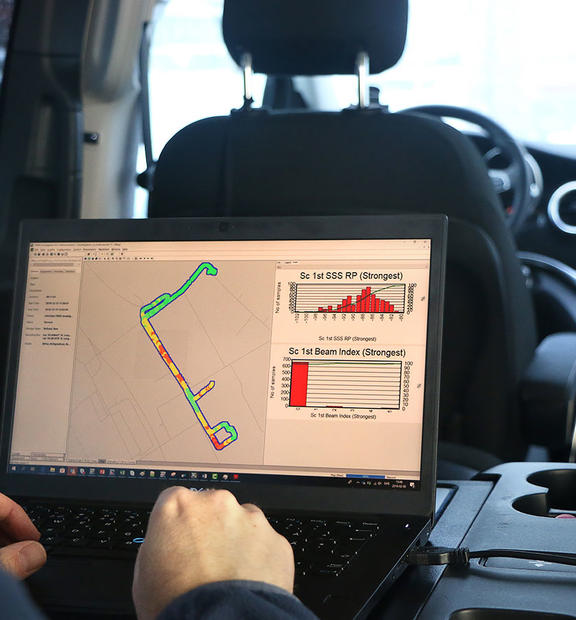The 5G tsunami is coming up fast, and operators are scrambling to capitalize on the opportunity. This next-generation mobile wireless technology promises to dramatically accelerate download speeds and response times while enabling networks to connect to more devices. Gartner forecasts worldwide 5G infrastructure investment will reach $4.2 billion in 2020.
The hype around 5G is inescapable, with some studies predicting performance that’s 100 times faster than 4G networks. But although the long-term potential of 5G is massive, the reality is that its rollout will likely be a phased one, with limited performance gains in the beginning.
A variety of 5G technologies are available, and knowing where to invest is key. To unlock maximum ROI from 5G, operators must choose an infrastructure that they can deploy quickly and cost-effectively. Moreover, as the 5G infrastructure investment will be a granular one, operators will need to determine where they should invest first.
Three 5G Spectrums Lead the Pack
Operators have many choices, each with its own advantages and disadvantages, depending on the environment and use case. Let’s take a closer look at three major spectrums that can support 5G:
Millimeter wave (mmWave) is the band of spectrum between 30 GHz and 300 GHz. High-speed wireless communication in this spectrum provides major performance advantages. However, it also is limited by a very short range, so deploying it will require many new cell-sites and hence a significant investment to cover even small areas. Fixed Wireless Access (FWA) employs mmWave, and has been very popular in the U.S., where the FCC rapidly made huge amounts of spectrum available in just 15 months. For small, surgically-placed use cases, mmWave technology is capable of delivering extremely high performance. This is probably the frequency that is the long-term winner, enabling super performance, but it will require users to take into account both vegetation and humidity.
Mid-band communications operating between the 1 and 6 GHz frequencies are in many ways the “sweet spot” for 5G. Most of the mid-band spectrum is already licensed for wireless data transmission, so mid-band communications provide a powerful combination of abundant spectrum and improved performance compared to 4G. Although mid-band 5G does not require as many sites as mmWave technology, it does require a substantial investment in large antennae, fiber, and microwave connectivity, and power to the transmission sites. Currently, some operators (like SK Telecom) are using clusters of mid-band sites to provide islands of high speed performance to important places of interest, and areas of high traffic.
Low-band communications operate below the 1GHz threshold, usually at the 600,700, 800, and 900 MHz bands. This spectrum supports 5G communications over long distances, making it ideal for rural applications. As the lower frequency propagates further, it requires fewer sites, so the 5g infrastructure investment required to provide nationwide coverage is much lower. Its low frequency is highly resistant to distortion, however, low-band communications also offer a much more modest performance boost compared to other 5G options. Short term, this more mundane version of 5G may prove to be a quiet winner. We have long predicted that many busy LTE sites will show noticeable signs of congestion in 2020 as data traffic explodes. Low-band 5G may be just what the doctor ordered.
Adopting a Phased Approach to 5G
Operators clearly have numerous options to extend into the 5G marketplace. How can they bring their offerings to market fast, taking advantage of their legacy LTE investment, while building a path forward? Operationally, it’s much easier for mobile operators to deploy 5G on n existing sites. To accelerate and extend their market reach, some industry-leading operators are choosing a pragmatic, software-based approach.
In a future blog, we will explore how Dynamic Spectrum Sharing is enabling industry leaders like Swisscom achieve 90% 5G population coverage in 2019.
Using this feature, Swisscom will be able to leverage the existing frequency spectrum and infrastructure for 4G and 5G customers, depending on their needs.










